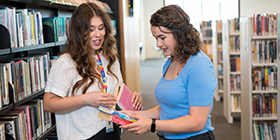Some of the first Indians to settle in Christchurch were Anglo-Indians. They arrived as domestic servants with John Cracroft Wilson in 1854 where they were employed on his estate which later became the suburb of Cashmere. They married into the local populace and some of their descendants still live in the Canterbury region.
It was a New Zealand Anglo-Indian who, in 2001 at the triennial World Anglo-Indian Reunion held in Auckland, selected 2 August to be a day of celebrating Anglo-Indian culture, culminating in World Anglo-Indian Day.
A pan-Indian community
Anglo-Indians (originally called ‘Eurasians’) are an Indian community who are the descendants of a historical union between a European father and an Indian mother.
The community often traces its initial origins to the arrival of the Portuguese merchants who settled in India in the 16th century. The British were the next major European power to arrive in the subcontinent, with the British East Indian Company gradually expanding their authority beyond the trading ports where they had initially settled. Originally the officials of the Company encouraged their men to marry Indian women. In the early days of the Company, it was common for British men to integrate themselves into Indian culture, with some converting to Islam, adopting Indian fashions and practices, and raising families with their Indian wives, essentially becoming what historian William Dalrymple has termed “White Mughals”.
Yet by the end of the 18th century attitudes began to change. The loss of the American colonies made the British wary of allowing a community, whose loyalties were not always certain, the responsibility of administering their most prized colonial possession. Measures were taken to restrict Anglo-Indians to lower ranks of the civil service and military in order to prevent them from gaining positions of authority.
By the dawn of the nineteenth century, racism and religious intolerance by the Company board of directors in London also led to the cohabitation of British and Indians being actively discouraged. Relationships between British men and Indian women still continued in secret, but the children were often no longer publicly acknowledged by the father. British regulations meant the Indian mothers had no rights to their children, and many were taken off them and abandoned in orphanages where they were raised to become British and Christian.
During the era of the British Raj (1858-1947), Anglo-Indians often worked in roles where they could act as intermediaries between the British officials and Indian employees. One traditional form of employment reserved for them was the railway department. As such the railway came to play a central role in the identity of Anglo-Indians and even led to the development of certain dishes such as railway mutton curry.
Although they dressed in the manner of the British, had British names and were Christian, they were still not accepted as equals by the British who ruled in India. In order to escape the prejudice they faced, many assimilated into British society by covering up their Indian roots, often attributing their looks to a “Spanish ancestor”. Others, when immigrating to new countries, hid their origins and simply pretended that their family were “British who lived in India”. As a result of this, generations have grown up cut off from their roots and cultural identity.
Because of their identity as subjects of the British Empire, Anglo-Indians continued to arrive in New Zealand throughout the late nineteenth and early twentieth century, especially in the decades leading up to the independence of India in 1947. Although the community in India is estimated to be between 300,000 to 1,000,000 strong, the diaspora following Independence led to many settling in former British colonies such as Australia, Canada and New Zealand. Today, many New Zealanders of Anglo-Indian heritage are now reconnecting with their culture and heritage, often in the form of making trips to India for the express purpose to research their family’s origins.
The subject of this ‘renaissance’ of Anglo-Indian identity in New Zealand is currently being researched by Dr. Robyn Andrews of Massey University. The oral histories of Anglo-Indians in New Zealand is also the subject of the book, Raj Days to Downunder by Christchurch based scholar, Dorothy McMenamin (an Anglo-Indian originally from Pakistan). Work has also been undertaken by Dr. Jane McCabe of Otago University who has examined the history of the ‘Kalimpong Kids’, Anglo-Indian children who were brought out to New Zealand in the early twentieth century to work in domestic duties.
Famous Anglo-Indians include writer, Virginia Woolf, comedians, Billy Connolly and Alistair McGowan, and musicians, Cliff Richard and Engelbert Humperdinck.
Find out more
- A list of fiction and non-fiction resources about Anglo-Indians in our collection.
- Read Rick Stein's India to learn how to cook railway mutton curry.
- Untold Stories: Anglo-Indians in NZ by Dr. Robyn Andrews and AsiaNZ.
- Dr. Jane McCabe's Kalimpong Kids project.






Add a comment to: Invisible Indians – World Anglo-Indian Day: 2 August